CH2M Hill's Formula for Success: Fly High but Stay Grounded La Portada en espa�ol (1.89 MB)
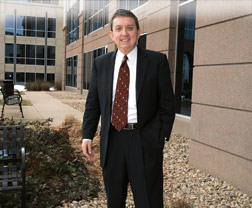
Michael Goodman/ENR
|
Executives of CH2M Hill Cos. Ltd. like to show off “the little yellow book,” a 4 x 5-in., 15-page illustrated pamphlet of “core values” that has been a corporate operating manual since former chairman Jim Howland wrote it in 1982. Handed to new employees and subcontractors, translated widely and displayed prominently in a headquarters corridor, it zeroes in on what defines the firm, even now as a global engineer-constructor with some 20,000 employees and $4.5 billion in 2006 revenue. The pamphlet may seem dated but it still energizes Denver-based CH2M Hill’s push for people, projects and profits, as well as for environmental stewardship and “corporate immortality.”
CH2M Hill has come a long way since its 1946 founding as a water-wastewater engineer. The firm’s lucrative business lines now include transportation, nuclear waste, power, industrial and high technology, with services branched out to design-build, program management, engineer-procure-construct, operations and research and development. Design-build was banned at CH2M Hill until 1997.
CH2M Hill’s evolution into an industry giant is keyed to the vision and drive of chairman and CEO Ralph R. Peterson, a 42-year company veteran who became chief in 1991. The firm prides itself on attracting the industry’s best and brightest, and retaining them through ever-more challenging assignments and extensive employee ownership. Working on “the most difficult challenges on the planet is an important source of competitive advantage,” he says. “We have a very strong balance sheet, no debt, and we’ve financed a doubling of the firm every five years for the last 15 [years] with internally generated capital.”
The firm reported $4 billion in revenue last year, with another half-billion from joint ventures. Reflecting its growth, in 2006, CH2M Hill ranked No. 5 on ENR’s list of Top 500 Design Firms and No. 38 on the Top 400 Contractors. Paul Zofnass, president of New York City management consultant EFCG Inc. and a CH2M Hill financial adviser, calls the firm “the Goldman Sachs of the engineering and construction business. It is a very functional organization.”
Dubbed “the big brain” by one employee, Peterson is an icon at CH2M Hill. Adds David Rosenblum, an executive in the firm’s Defense Dept. business unit: “Ralph is an amazing guy.”
 | 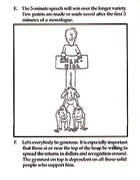 | 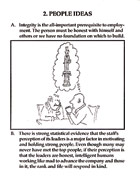 |
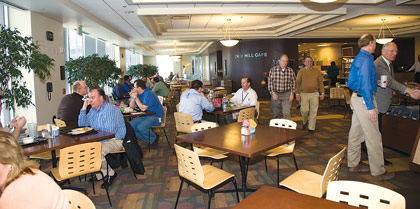 Michael Goodman "Yellow book" (above) defines life at CH2M Hill, where the cafeteria is a key space for employees to collaborate. Company Chairman Ralph R. Peterson (right) often visits and interacts with staff.
| ||
Peterson, 62, doubles as a sought-after intellectual and visionary outside the firm. The list of his corporate, academic and community board memberships fills up a page of his résumé. “Ralph is a brilliant man,” says Murli Tolaney, chairman of MWH, Broomfield, Colo.
 Michael Goodman/ENR 'Smart' boardroom links to all CH2M Hill offices for project data and risk reviews. Firm was also first certified partner for Google Earth GIS and IT products (below right).
|
But Peterson would prefer the limelight focus on CH2M Hill and its employees. The lack of personal egomania radiates throughout the firm. “There is no executive dining room, parking spots or other perks,” says S. Wyatt McCallie, its retiring general counsel. “There are no thrones at CH2M Hill.”
Peterson circulates freely and engages employees openly. “Ralph loves the firm every bit as much as his own family,” says Rosenblum. His annual compensation tops $2 million, based on available data, and he sets a high bar for output and excellence. His long workdays and e-mails from the wee hours are legendary throughout and outside the firm.
| + click to enlarge |
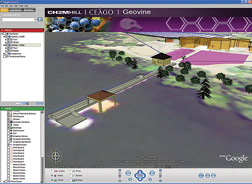 CH2M Hill
|
That is reflected in the company’s growth and diversification into new markets and geographies, but it hasn’t come without bumps. CH2M Hill’s evolution from a pure engineering culture to one with more construction influences, and more risk, continues. It now has about $2 billion worth of work “at risk,” executives say. The firm has learned to manage the competing forces and seek out new and larger clients while still serving smaller ones. “Cultures have to change and adapt to the marketplace,” says Peterson. “What’s not supposed to change are the values of ethics, honesty and commitment to safety.”
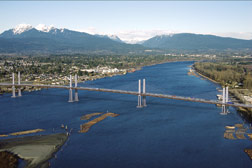 CH2M Hill CH2M Hill is a construction partner on Vancouver’s planned Golden Ears bridge.
|
Diverse
CH2M Hill’s array of enterprises are in three business sectors: civil infrastructure, federal and industrial. Strength in its traditional water markets, both in the U.S. and abroad, boosted civil group revenue 26.5% last year. Pre-tax profit rose 82.7%. “We still have the same clients, but they’re asking us to do more,” says Donald Evans, group CEO who joined up in 1971.
The city of Aurora, Colo., a wastewater treatment services client since the 1970s, is an example. CH2M Hill is now program manager for its Prairie Waters project, a $754-million expansion program. “We are going from being an operations-oriented utility to a large capital one,” says Aurora Water director Peter Binney. “There are still places in the marketplace for the CH2 of the ’70s, but not here. This is the biggest water project in the Rockies.”
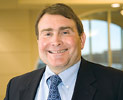 |
The civil group also includes CH2M Hill’s transportation work, which now has a $1-billion construction backlog. “It’s been an outstanding business for us,” says Evans. This fall, the firm is to finish design-build work on the $150-million Cosmix Parkway, a major highway improvement proj-ect in Colorado Springs, Colo. It also has a key presence in Vancouver, British Columbia, including upgrades for the 2010 Winter Olympics and a design-build joint venture for the $650-million Golden Ears cable-stayed bridge, as well as program management for billions of dollars in new road access in and out of the city. “We’re very pleased where we’re positioned,” says Michael Kennedy, transportation group president.
The firm has stepped up its effort to capture burgeoning work on both U.S. coasts. The California Transportation Commission last month announced the first $4.5 billion in voter-approved projects. Billions more could come next year, says Evans. Competition for work will be strong and CH2M Hill will commit to 3,000 staffers there, he says.
Sector rivals and partners, who often interchange, offer praise. On environmental projects, “they are our best competitors and teaming partners,” says Bob Uhler, CEO of MWH. “We’ve never had a bad project.” Randy Larson, executive vice president of PBS&J, Orlando, Fla., says, “When we go up against them, we have our work cut out for us.”
CH2M Hill’s industrial sector, which also includes power, electronics and “enterprise” IT solutions, grew from the firm’s 2003 whirlwind acquisition of Lockwood Greene. The new combination seems to be working. “We have not been lost in the shuffle,” says Fred Brune, former LG president who is now president of CH2M Hill’s government facilities and infrastructure group. “Our businesses are more robust than before.” With the tumult of Lockwood Greene’s parting from now defunct contractor J.A. Jones, “our people were anxious to be part of a stable organization,” says one executive. CH2M Hill was “very deliberate in how we would be brought in.”
But the market has not been without “hiccups,” Peterson’s term for project overruns that cut into profits, particularly pushed by rising labor and materials costs. The industrial group took a 32.7% pre-tax loss last year.
Such price hikes cost CH2M Hill on an estimated $100-million lump-sum plastics plant it finished last year in South Carolina for Eastman Chemical. Executives confirm the loss but will not quantify it, insisting that the plant was delivered safely...

